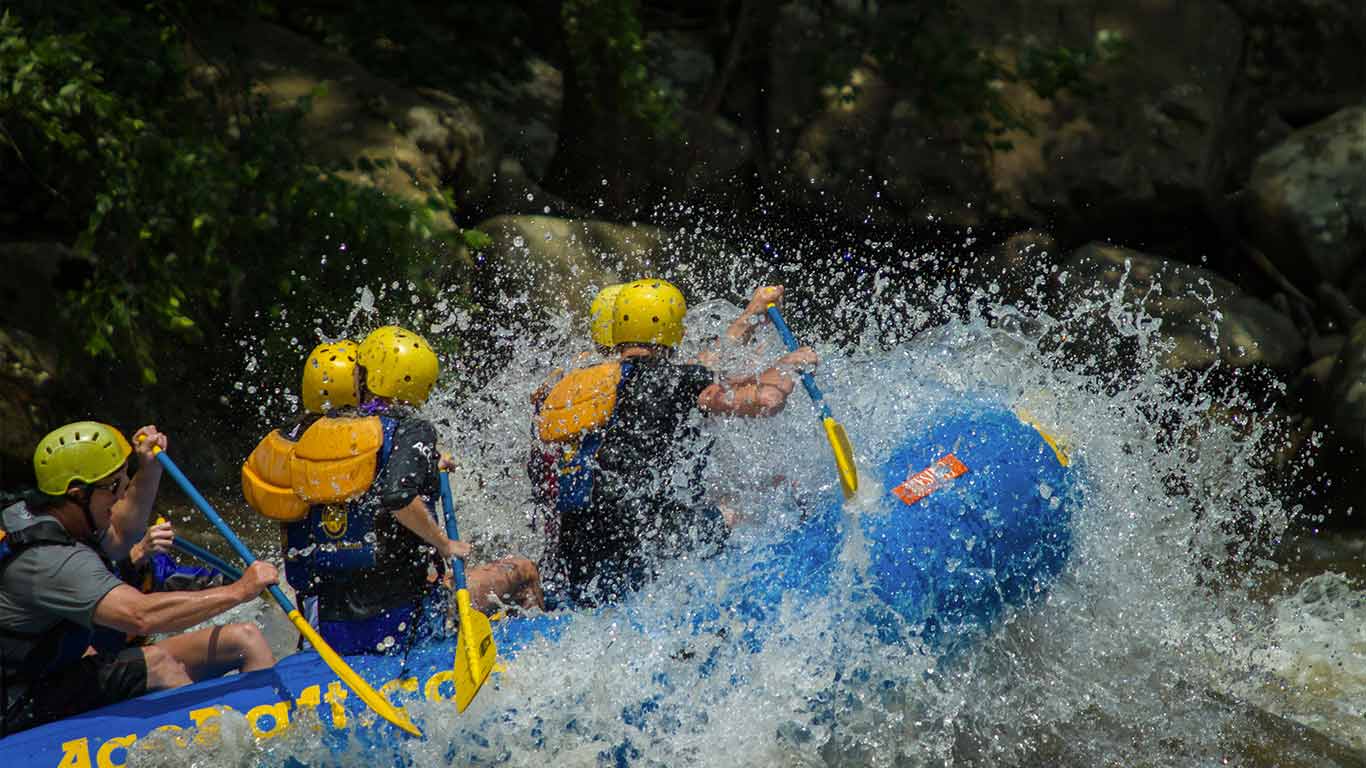July 16, 2020
Lower New River Gorge Rafting
The New River Gorge In West Virginia
|New River Gorge National Park And Preserve
| |Lower New River Gorge Rafting
Lower New River Gorge Rafting
We drift effortlessly above the roar, the current draggin us closer to the smooth horizon line in front of us. Every inch progression reveals more of the maelstrom below, a chaotic mess of whitewater laid out for a quarter mile. The rapid is Miller’s Folly, and at today’s water level, we’ve got our sights set on one of my favorite features, Bonsai. Only out at certain water levels, and only appropriate for top notch crews, today I have found myself with that perfect combination. The tension in the raft is palpable. Paddles gripped tight, feet braced against the insides of our craft. I told them to be patient, but to be ready. To get this one, it’s all about timing. And now they wait expectantly for my command. With my paddle still in the water, I make the slightest of adjustments as we drift. Wait for it . . . wait for it . . . “FORWARD!” My crew gets in two perfectly in sync strokes, and that’s all we need. In an instant, we plunge eight feet over a sheer vertical drop, only to have our raft immediately engulfed by an eight foot frothy wall of a wave. 
The Bonsai wave is just one of hundreds of different whitewater features you’ll find when on a Lower New River rafting trip through the heart of the New River Gorge. This section of whitewater is a classic run in North America, well known for its big waves and wide range of runnable water levels. The New River Gorge National River, part of our National Parks System, encompasses 53 miles and 70,000 acres along the course of the New River in West Virginia. The last eight mile section through the narrowest part of the 1,000 foot deep New River Gorge is where you’ll find the highest concentration of Class II-V rapids, and this section is known as the Lower New.
The amount of flow, measured in cubic feet per second (cfs), plays a big role in the difficulty level of rapids, and even whether or not a river can be paddled safely. Flows can be too high or too low, but one thing that makes the New River so unique is that it has an extremely wide range of flows that are able to be paddled. Commercial rafting outfitters will typically run trips anywhere from just below 1,000 cfs up to 32,000 cfs! In some spots on the Lower New, this difference in cfs can mean a difference in actual water level upwards of 20 feet! With such a dynamic scope of water levels, you can paddle the Lower New five different times throughout the year and it feel like you were on five different rivers. Spring time is known for its big, western-style whitewater. Climbing up and over standing waves measuring 16 feet from crest to trough and avoiding huge hydraulics that would swallow a house is the name of the game during big water. As the water comes down, guides often refer to these middle levels as “crunchy” or “stiff.” In these flows, many of the waves are breaking hard at their crest, making for a day full of incredible crashing hits and romp-stompin’ rapids. Later into the summer, the river’s flow gets lower, and instead of the highway of waves we see at high water, now it’s time to maneuver around the house-sized boulders strewn throughout the riverbed. The technical Class V rapid “Double Z” becomes its namesake at these lower water levels, with paddlers having to make zig-zag moves across the river to avoid the many rocks and ledges. Low water also enables another WV whitewater favorite, surfing! This land locked state has some of the most epic surfing around! Catch waves and hydraulics with your raft and surf them as long as you can stand it. No matter what the water level, the Lower New has plenty of whitewater goodness!
All of this whitewater fun is to be had while drifting through the depths of the New River Gorge. Sandy beaches are scattered along the way providing perfect spots to stop for lunch and swim in the calm eddy water. A favorite stop on commercial trips is at “jump rock”, where you get to hurl yourself off of one of those house-sized boulders into the river below. Towering above, you’ll get amazing views of the gorge and its famous cliff and rock formations like the Endless Wall and Ram’s Head. The river trip is capped off with a one of a kind perspective of the New River Gorge Bridge, spanning over 3,000 feet from one side of the gorge to the other, 876 feet above your raft. Action packed and adrenaline inducing, the Lower New River is a whitewater paradise no matter what the season or water level. With 20 different named rapids ranging from Class II-V, it is not too much for the first timer while also delivering the excitement, challenge, and variety to keep you coming back again and again.
As many of us do, Bryant responds to many titles. His two favorite roles are husband to his wife Laura and proud Papa to his three girls. Professional titles include guide, instructor, operations manager, race director, photographer, and writer. He has worked in the outdoor adventure industry for 18 years, spending the vast majority of that time leading whitewater rafting and climbing trips here in the New River Gorge region of WV.